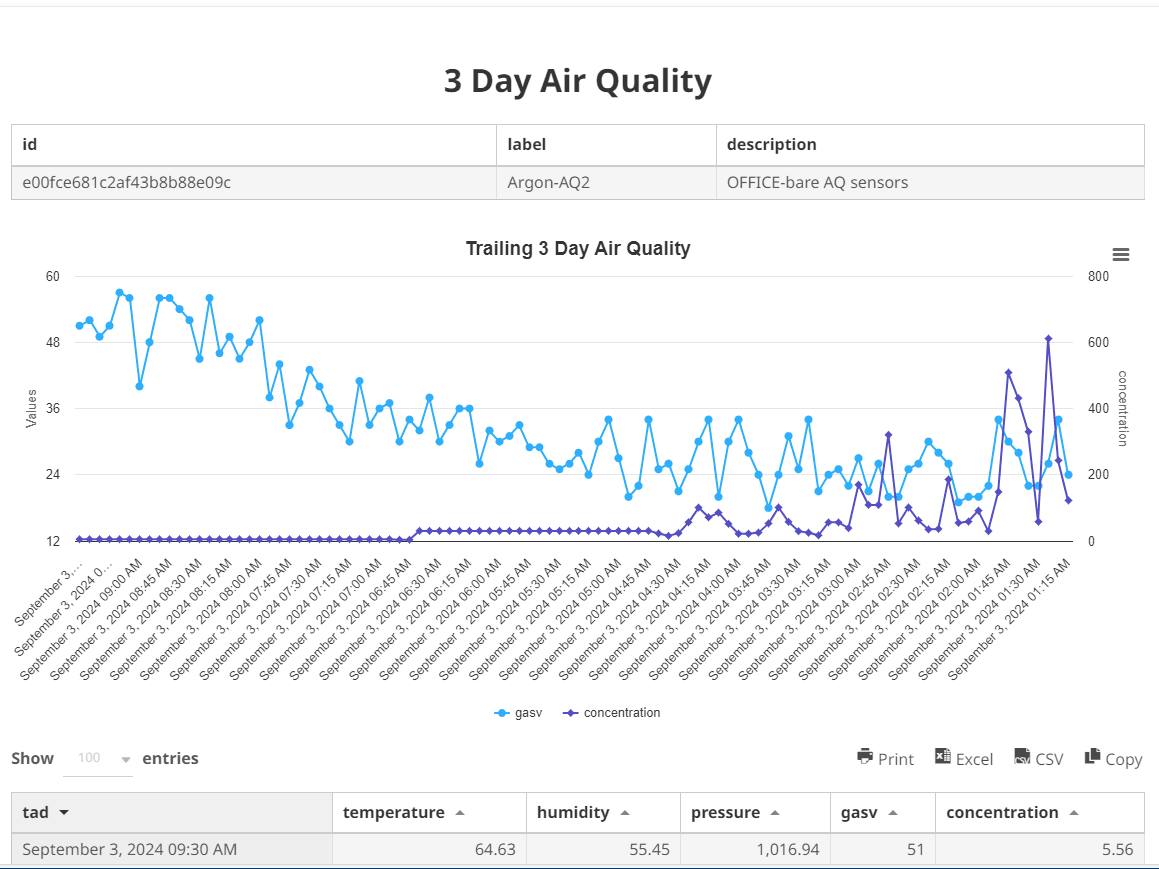Typically, indoor air quality measurements include at least fine particulate matter (PM) and volatile organic compounds (VOC). More recent research suggests that carbon dioxide, CO2, is also an important marker of the air quality.
Our first prototype (April 2024) measured and streamed to the cloud: PM concentration, VOC, temperature, humidity, and atmospheric pressure.
Here are definitions of key metrics for measuring air quality:
- Particulate Matter (PM): This includes PM2.5 and PM10, which refer to particles with diameters of 2.5 micrometers or less and 10 micrometers or less, respectively. These particles can penetrate deep into the lungs and even enter the bloodstream, causing various health issues1.
- Volatile Organic Compounds (VOCs): These are measured in micrograms per cubic meter (µg/m³). VOCs are emitted as gases from certain solids or liquids and include a variety of chemicals, some of which may have short- and long-term adverse health effects2.
- Carbon Dioxide (CO₂): Measured in parts per million (ppm), CO₂ levels can indicate the effectiveness of ventilation in a building. High levels of CO₂ can lead to discomfort and reduced cognitive function2.
- Nitrogen Dioxide (NO₂): This is measured in micrograms per cubic meter (µg/m³). NO₂ is a significant air pollutant that can irritate the airways in the human respiratory system3.

